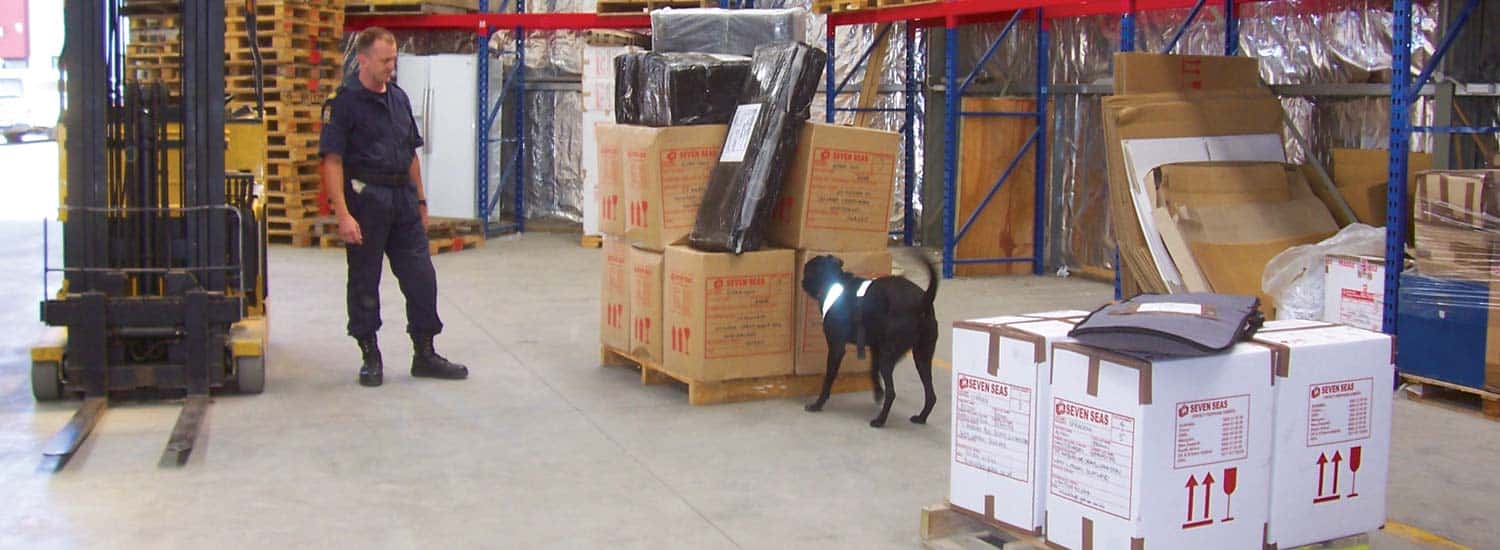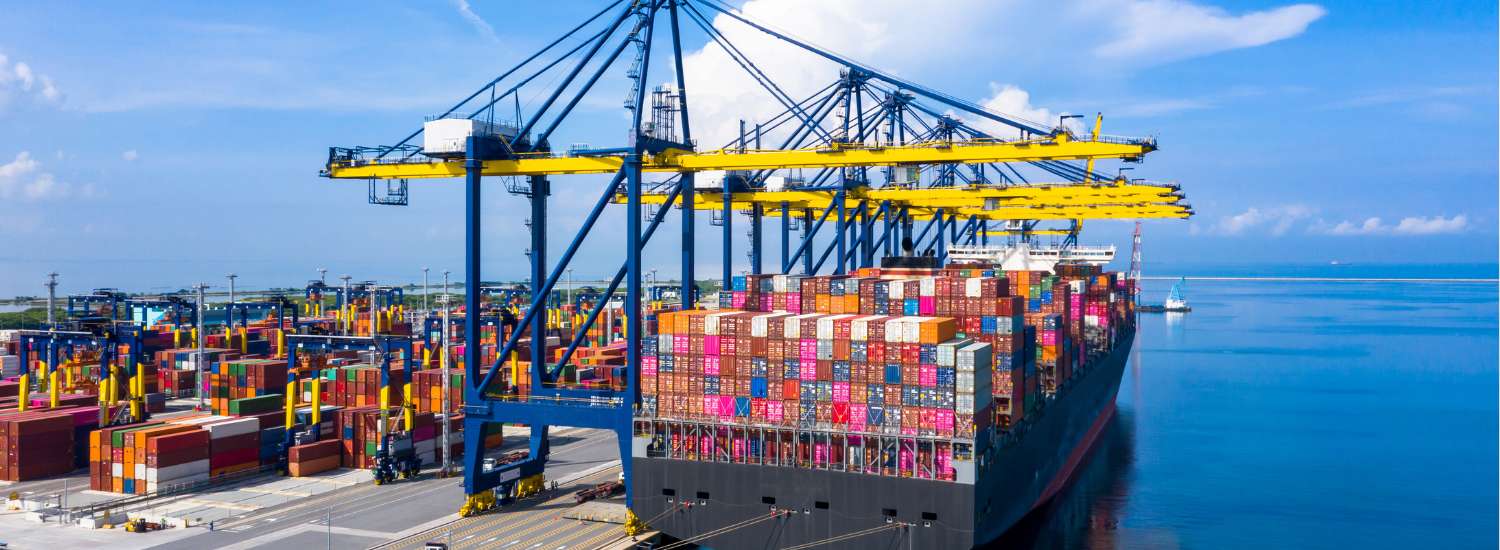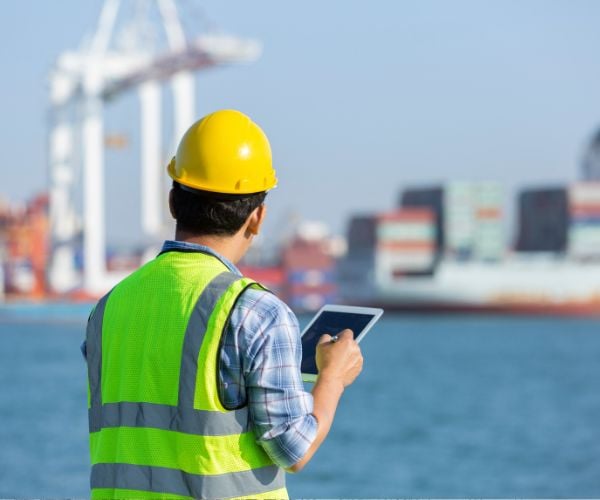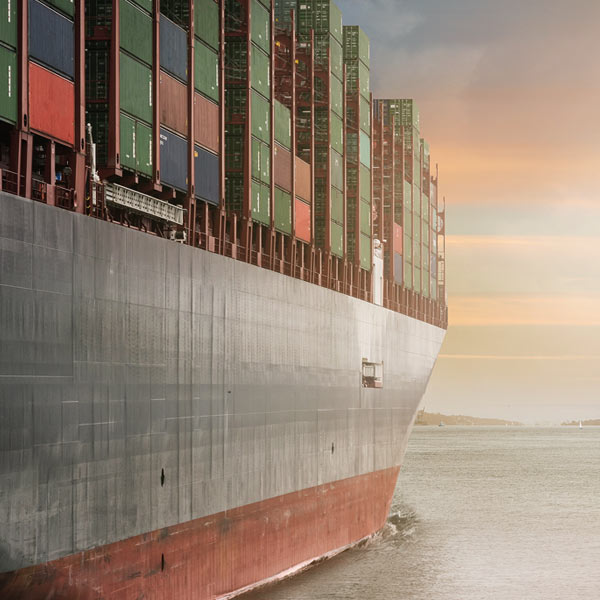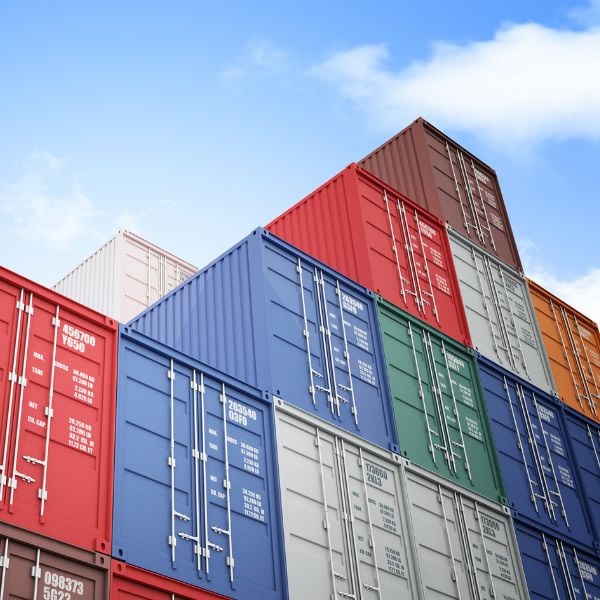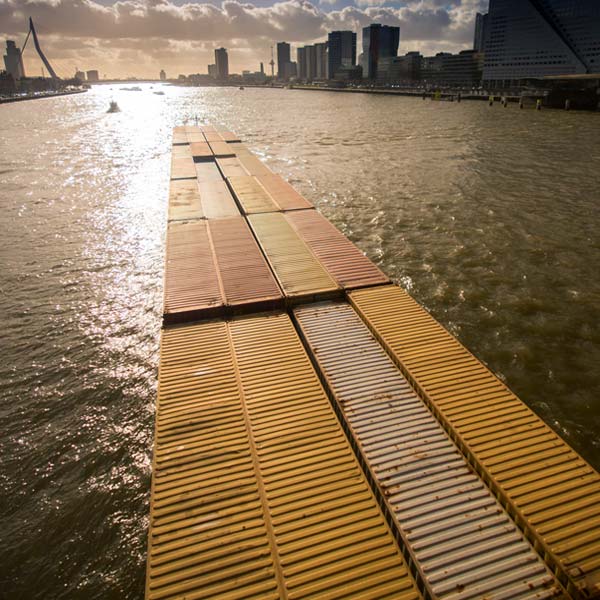Before packing, check this list of items prohibited from entering a particular country or region.
Key takeaways
- The busiest port in the world is the Port of Shanghai in China, which manages over 47 million Twenty-Foot Equivalent Units (TEUs) annually.
- The busiest ports in the US based are the Port of Los Angeles (8.6M TEUs), the Port of Long Beach (8M TEUs), the Port of New York and New Jersey (7.8M TEUs), the Port of Savannah (4.9M TEUs) and the Port of Houston (3.8M TEUs).
- The busiest ports in Europe are the Port of Rotterdam in the Netherlands (13.4M TEUs), the Port of Antwerp-Bruges in Belgium (12.5M TEUs), the Port of Hamburg in Germany (7.7M TEUs), the Port of Valencia in Spain (4.8M TEUs) and the Port of Piraeus in Greece (4.6M TEUs).
What is the busiest port in the world?
The busiest port in the world is the Port of Shanghai in China, which manages over 47 million Twenty-Foot Equivalent Units (TEUs) annually. Strategically located in the Yangtze Delta, it covers a total land area of 3,619 square kilometres (1,397 miles) and includes two bulk cargo terminals and three break-bulk terminals. As a powerhouse of global trade, Shanghai processes an immense flow of cargo each year, including both 20-ft and 40-ft shipping containers.
The Port of Shanghai benefits from direct access to major shipping routes across East Asia, the Australian continent and beyond. Its mammoth size and capacity place it above other significant global ports, including Singapore and Ningbo-Zhoushan, which are the second and third busiest ports worldwide.
Shanghai's vast container facilities and sophisticated infrastructure allow it to manage such staggering volumes efficiently. It features specialised zones for refrigerated cargo, hazardous materials, and oversized goods. Automated cranes, advanced tracking systems, and AI-driven logistics help to optimise operations, reduce turnaround times, and facilitate seamless transfers to rail and road networks.
Port of Shanghai: quick facts*
| Port type | Deep-sea and river |
| Operated by | Shanghai International Port Group (SIPG) |
| Number of employees | 13,036 |
| Annual container volume | 49.16M TEUs |
| Major exports | Integrated circuits, computers, telephones, gold, and cars |
| Major imports | Integrated circuits, iron ore, gold, cars, and refined copper |
*information as of 2023
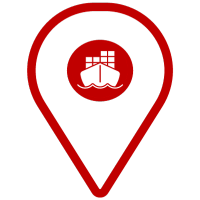
Top 10 busiest ports in the world
The top 10 busiest ports in the world are the Port of Shanghai (China), Port of Singapore, Port of Ningbo-Zhoushan (China), Port of Shenzhen (China), Port of Qingdao (China), Port of Guangzhou (China), Port of Busan (South Korea), Port of Tianjin (China), Port of Jebel Ali (United Arab Emirates) and Port of Hong Kong.
The graph below shows the container volume (by million TEUs) each of these ports moved during 2023 compared to ten years earlier in 2013:
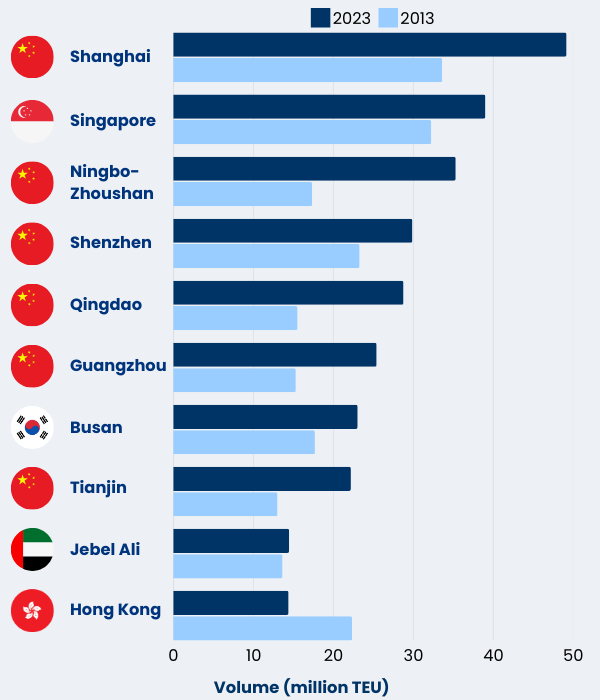
Source: worldshipping.org
What is a port in shipping?
A port in shipping is a logistical gateway where vessels dock to load or offload goods. These essential trading hubs are usually coastal, but some, like the Port of Duluth in the US and the Port of Hamburg in Germany, operate inland with access to the sea via rivers or canals. Ports support most global trade, handling over 80% of worldwide merchandise volume.
Ports combine robust infrastructure, such as berths, terminals, cranes, inspection areas and storage facilities, with convenient access to efficient transport for distribution. These bustling hubs of activity attract highly skilled workers and businesses specialising in logistics, warehousing and goods processing. While some handle commercial goods, like container ports, others cater to bulk cargo and the fishing industries.
The influence of shipping ports extends to their surrounding areas, helping spur urban growth but also contributing to environmental challenges, such as dredging (removing sediment and debris from riverbeds or seabeds to deepen ports) and pollution.
Busiest ports in the US
The busiest ports in the US based on the volume of containers moved in 2023 are the Port of Los Angeles (8.6M TEUs), the Port of Long Beach (8M TEUs), the Port of New York and New Jersey (7.8M TEUs), the Port of Savannah (4.9M TEUs) and the Port of Houston (3.8M TEUs).
US ports handle massive quantities of various goods, such as petroleum, automobiles, grain, and containerised cargo. Oil refineries and expansive container terminals help support nationwide industries and the global supply chain.
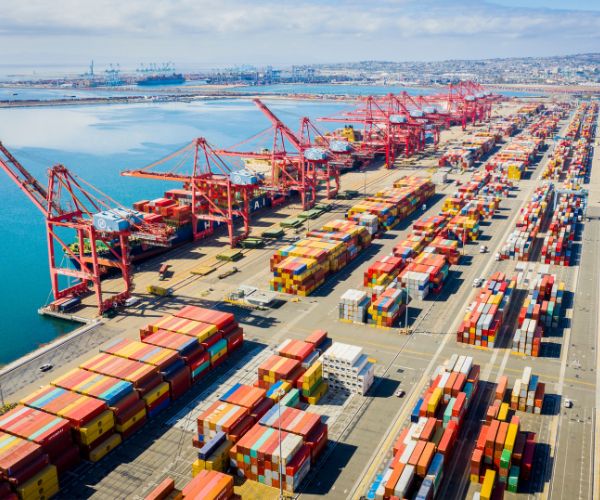

The Port of Los Angeles
Port type: Deep-sea | Operated by: The Los Angeles Harbor Department | Annual container volume: 8.6M TEUs
The Port of Los Angeles in San Pedro Bay, often called "America's Port", is the largest and busiest container port in the United States. It spans 7,500 acres of land and water and features cargo terminals as well as those for cruise ship passengers.
A critical gateway for trans-Pacific trade, it primarily imports consumer goods such as electronics, clothing, furniture, plastics and auto parts, while its major exports include paper, animal feed, soybeans, raw cotton and recycled metal.

The Port of Long Beach
Port type: Deep-sea | Operated by: The City of Long Beach Harbor Department | Annual container volume: 8M TEUs
The Port of Long Beach, adjacent to the Port of Los Angeles, occupies 3,200 acres of land and 25 miles of waterfront. It's a leader in greener seaport operations, having equipped its Middle Harbour with nearly all electric and zero-emissions equipment.
The port plays a vital role in the US supply chain, connecting American businesses to global markets, particularly in Asia. Key containerised imports include apparel, sporting goods and motor vehicle parts, and for exports, metals and agricultural products like plants, fruits and vegetables.

The Port of New York and New Jersey
Port type: Deep-sea and river | Operated by: The Port Authority of New York and New Jersey | Annual container volume: 7.8M TEUs
The Port of New York and New Jersey sits in one of the world's largest natural harbours, spans two states with terminals in Newark, Elizabeth, and Staten Island, and is the busiest port on the US East Coast. Strategically located near the Atlantic Ocean, it connects the States to Europe, Asia, and beyond.
From roll-on roll-off (Ro-Ro) items such as cars and heavy equipment to break bulk cargo, the port is equipped to handle a diverse range of goods. Its main imports are beverages and vehicles, and it primarily exports wood.

The Port of Savannah
Port type: Deep-sea and river | Operated by: The Georgia Ports Authority | Annual container volume: 4.9M TEUs
The Port of Savannah, located on the Savannah River in Georgia, is one of the fastest-growing ports in the US and boasts the Garden City Terminal, the largest single-terminal container facility in North America, spanning 1,345 acres.
The port is renowned for its logistical efficiency and is well connected to both the wider world and the United States, as it has immediate access to two major interstate highways. Its top import commodities include machinery, appliances, and electronics, and it exports wood pulp, paper and clay.

The Port of Houston
Port type: Deep-sea | Operated by: The Port of Houston Authority | Annual container volume: 3.8M TEUs
Located along the 52-mile Houston Ship Channel in Texas, the Port of Houston's strategic position near the Gulf of Mexico allows superb access to international shipping routes and US inland markets. Its sprawling complex includes container terminals, bulk cargo docks and refrigerated storage facilities.
The port handles a wide variety of cargo, with key imports including petroleum products, machinery and steel and primarily exports resins and chemicals.
Busiest ports in Europe
The busiest ports in Europe based on the volume of containers moved in 2023 are the Port of Rotterdam in the Netherlands (13.4M TEUs), the Port of Antwerp-Bruges in Belgium (12.5M TEUs), the Port of Hamburg in Germany (7.7M TEUs), the Port of Valencia in Spain (4.8M TEUs) and the Port of Piraeus in Greece (4.6M TEUs).
Each bustling hub supports crucial trade across Europe and beyond by combining advanced infrastructure and multimodal distribution options.

The Port of Rotterdam
Port type: Deep-sea | Operated by: The Port of Rotterdam Authority | Annual container volume: 13.4M TEUs
The Port of Rotterdam in the Netherlands is the largest seaport in Europe. It covers 12,500 hectares and benefits from a strategic location at the mouth of the Rhine-Meuse-Scheldt delta and extensive rail, road, and waterway networks.
Renowned for its innovation, the port boasts state-of-the-art biofuel facilities and operates two container terminals with autonomous cranes. The Port of Rotterdam primarily imports agricultural products like corn and grains, and it exports sand, gravel, magnesite and other industrial minerals.
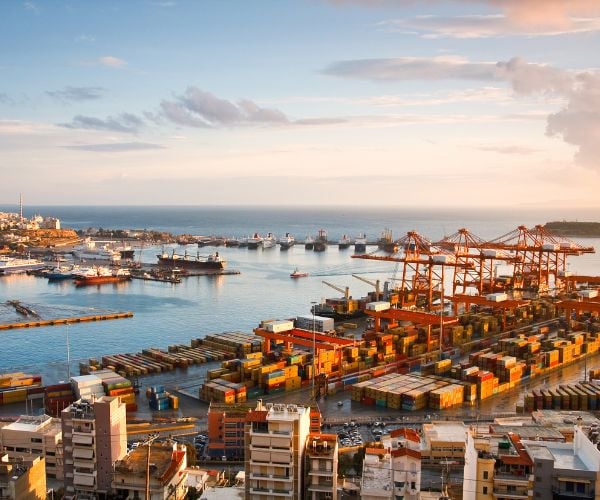

The Port of Antwerp-Bruges
Port type: Deep-sea | Operated by: The Antwerp-Bruges Port Authority | Annual container volume: 12.5M TEUs
The Port of Antwerp-Bruges in Belgium covers 130 square kilometres and was formed in 2022 by merging the ports of Antwerp and Zeebrugge. It combines Antwerp's strengths as a container and chemical cargo hub with Zeebrugge's expertise in roll-on/roll-off (RoRo) and liquefied natural gas (LNG) logistics.
The port is the global leader in the importation and exportation of vehicles but also handles a diverse range of other cargo, including chemicals, crude oil, machinery, consumer goods, and foods.

The Port of Hamburg
Port type: Deep-sea and river | Operated by: The Hamburg Port Authority | Annual container volume: 7.7M TEUs
The Port of Hamburg in Germany sits on the Elbe River, approximately 110 kilometres from the North Sea. Thanks to its favourable geographical location, it offers excellent accessibility to the Far East, Eastern European countries, and the Baltic Sea states.
The port specialises in containerised cargo but also manages bulk goods and project shipments (heavy-duty or high-value equipment). Its key imports are consumer goods, textiles and electrotechnical items, and its exports are automotive components and pharmaceutical products.

The Port of Valencia
Port type: Deep-sea | Operated by: The Port Authority of Valencia | Annual container volume: 4.8M TEUs
Situated on Spain's eastern coast along the Mediterranean Sea, the Port of Valencia is the largest and best-connected port on the Iberian Peninsula. Due to its proximity to major shipping routes, it's a vital hub for maritime trade in Southern Europe.
The port features state-of-the-art infrastructure and multipurpose facilities. Key imports and exports include timber, textiles, foodstuffs (e.g. wine and fruit) and items for the construction industry (e.g. ceramic tiles and marble).

The Port of Piraeus
Port type: Deep-sea | Operated by: The Piraeus Port Authority | Annual container volume: 4.6M TEUs
The Port of Piraeus in Greece is at the crossroads of Europe, Asia and Africa and an key transshipment hub, connecting global shipping lines to smaller Mediterranean and Black Sea ports. It has recently undergone significant upgrades, driven by Chinese investment through COSCO Shipping.
Its primary imports and exports are machinery, electronics, consumer goods, and refined petroleum. Beyond cargo, Piraeus is also one of the world’s busiest passenger ports, ferrying millions of travelers across the Aegean Sea.
